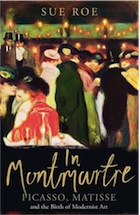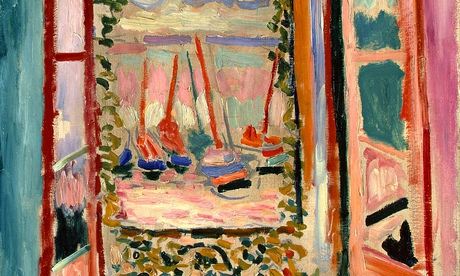Opium, wooden clothes, the origins of cubism … Sue Roe paints a rich portrait of the modernists in their early years
Leo Stein said of Picasso that he was "just completely there … more real than most people". This book is also just completely there. Like the Catalan sardana, a dance, as Picasso told Braque, that is "a communion of souls … each step must be counted … rich and poor, young and old, dance it together," here they are, all the very different characters in a group biography that manages not to miss any steps. André Derain stands out in his tall lankiness, with his outfits varying from his Collioure period of all white with a red beret, to his dandyish English tweeds with his red and green ties in his Montmartre period, to his thick woollen sweaters on the Rue Bonaparte. Maurice de Vlaminck – with his powerful body, blue eyes, flaming red hair, red scarf and a painted wooden necktie – joins Derain. Pablo Picasso and the curly-haired Georges Braque – both enchanted with Wilbur Wright and the idea of flight, experimenting with paper sculptures as "flying machines" – take to wearing "Vilbours": replicas of Wright's peaked green cap (Braque was even nicknamed "Vilbour"). Both also wore the cloche hats Braque had found at Le Havre, their sideburns smudged with burnt cork alongside their false moustaches. Costumes count.
 We see these four as the original Bande à Picasso, as they are swaggering along the Montmartre streets, then Derain and Vlaminck going in another direction as they split off from Braque and Picasso, who begin doing their cubist stuff. On that much discussed topic, Sue Roe is to the point. Matisse had wanted to show, the story goes, that one of Braque's paintings of the roofs of L'Estaque consisted of "petites cubes" – one of the origins of the term "cubism". Roe of course has much more on the term, and enlists the handheld fan as the symbolic object in cubist painting, enfolding as it does differing points of visual contact in a concertinaed form.
We see these four as the original Bande à Picasso, as they are swaggering along the Montmartre streets, then Derain and Vlaminck going in another direction as they split off from Braque and Picasso, who begin doing their cubist stuff. On that much discussed topic, Sue Roe is to the point. Matisse had wanted to show, the story goes, that one of Braque's paintings of the roofs of L'Estaque consisted of "petites cubes" – one of the origins of the term "cubism". Roe of course has much more on the term, and enlists the handheld fan as the symbolic object in cubist painting, enfolding as it does differing points of visual contact in a concertinaed form.
More
 We see these four as the original Bande à Picasso, as they are swaggering along the Montmartre streets, then Derain and Vlaminck going in another direction as they split off from Braque and Picasso, who begin doing their cubist stuff. On that much discussed topic, Sue Roe is to the point. Matisse had wanted to show, the story goes, that one of Braque's paintings of the roofs of L'Estaque consisted of "petites cubes" – one of the origins of the term "cubism". Roe of course has much more on the term, and enlists the handheld fan as the symbolic object in cubist painting, enfolding as it does differing points of visual contact in a concertinaed form.
We see these four as the original Bande à Picasso, as they are swaggering along the Montmartre streets, then Derain and Vlaminck going in another direction as they split off from Braque and Picasso, who begin doing their cubist stuff. On that much discussed topic, Sue Roe is to the point. Matisse had wanted to show, the story goes, that one of Braque's paintings of the roofs of L'Estaque consisted of "petites cubes" – one of the origins of the term "cubism". Roe of course has much more on the term, and enlists the handheld fan as the symbolic object in cubist painting, enfolding as it does differing points of visual contact in a concertinaed form.More


No comments:
Post a Comment